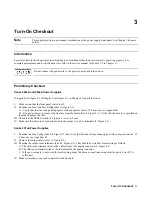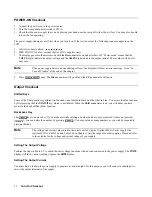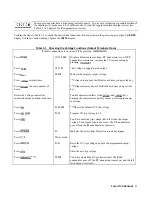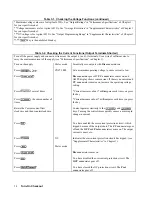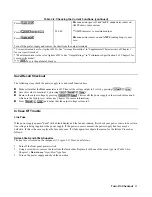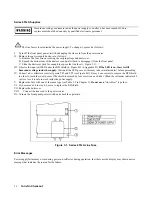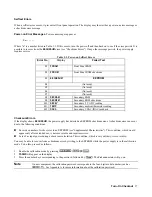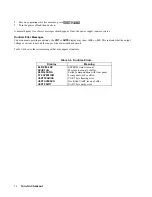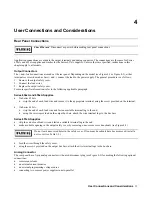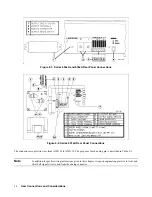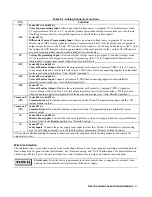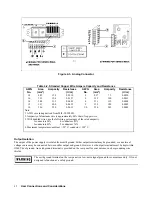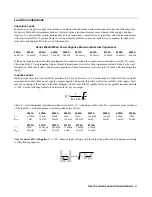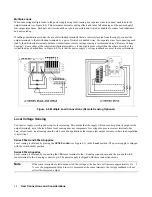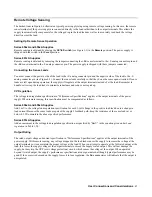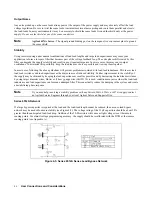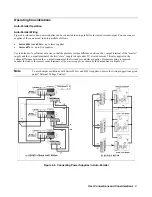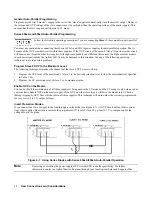
Turn-On Checkout
37
Selftest Errors
When a selftest error occurs, it prevents all front panel operation. The display may show either a power-on error message or
a checksum error message.
Power-on Error Messages
.
Power-on messages appear as:
En- - - - - -
Where “n” is a number listed in Table 3-3. If this occurs, turn the power off and then back on to see if the error persists. It is
possible to recover from the
EE CHKSUM
error (see "Checksum Errors"). If any other message persists, the power supply
requires service.
Table 3-3. Power-on Selftest Errors
Error No
Display
Failed Test
E1
FP RAM
Front Panel RAM
E2
FP ROM
Front Panel ROM checksum
E3
EE CHKSUM
EEPROM
E4
(Not used)
E5
(Not used)
E6
(Not used)
E7
(Not used)
E8
SEC RAM
Secondary RAM
E9
SEC R0M
Secondary ROM checksum
E10
SEC 5V
Secondary 5 V ADC reading
E11
TEMP
Secondary ambient thermistor reading
E12
DACS
Secondary VDAC/IDAC readback
Checksum Errors.
If the display shows
EE CHKSUM
, the power supply has detected an EEPROM checksum error. A checksum error can occur
due to the following conditions:
n
Excessive number of write cycles to an EEPROM (see "Supplemental Characteristics"). This condition, which would
appear only after extended use, is not recoverable and requires service.
n
Loss of ac input power during a checksum calculation. This condition, which is very unlikely, is recoverable
.
You may be able to recover from a checksum error by writing to the EEPROM while the power supply is in the calibration
mode. To do this, proceed as follows:
1.
Enable the calibration mode by pressing
.
2.
PASWD
will appear on the display.
3.
Press the number keys corresponding to the password, followed by
. The
Cal
annunciator will go on.
Note
On new equipment, the calibration password corresponds to the four- digit model number (such as
). See Appendix A for more information about the calibration password.









